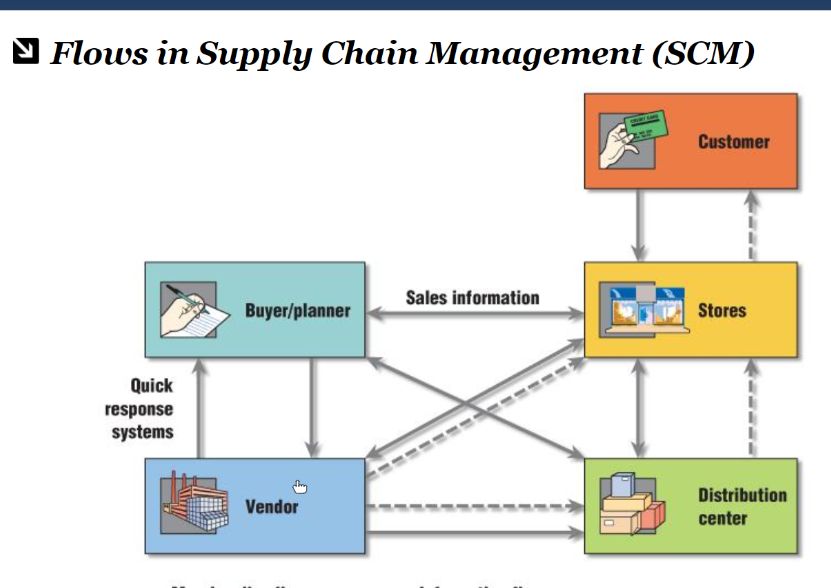E - Commerce (1) : Overview and EIS
Types of E - commerce
1. B2B
Example : intel

2. B2C
Example : amazon
3. C2B
Example : T - shirt design outsource
4. C2C
Example : e - bay : they do not own any kind of goods, just provide marketspace.
Enterprise Information system
Value chain 1. Inbound logistics
Inbound logistics are the processes related to receiving, storing, and distributing inputs.
Value chain 2. Operation
Operations are the activities that changes inputs into outputs. Here, operational systems create value.
Value chain 3. Outbound logistics
Outbound logistics are the activities that deliver your products or services to the customer.
Value chain 4. Marketing and sale
Value chain 5. Customer service
These 5 steps are involved in Enterprise Information System and value chain.

-
Upstream : activities with suppliers
-
Manage relationship with suppliers, purchasing firms, distributors, and logistics companies.
-
Coordinates and synchronizes activities of all stake holders.
-
Manage shared information about orders, production, inventory levels, and so on.
- IT enable efficient exchanges of information, goods and services among stakeholders.
- goal is to move precise amount of product, with speed, with lowest cost, from source to point.
-
Type of interorganizational system: Automating flow of information across
-
-
Flows in supply chain management
- Material Flows
- Information Flows
- Financial Flows

SCM Benefits
- Greater visibility of supply chain
- Lower inventory holding
- Reduce stock outs
- Lower lead time
- Tighter relationship with partner
- Higher productivity
SCM Challenges
- Getting suppliers /partners to come on board
- Internal resistance to change
- Learning curve
Enterprise Resource Planning
- Integrate data from key business processes into single system

ERP Benefits
ERP Challenges
CRM (Customer Relationship Management) : Downstream
-
Help manage relationship with customer
-
Capture and integrate customer data from all over the organization
-
Contribute to customer retention
CRM Benefits :
- More effective marketing
- Improve customer satisfaction
- Lower costs for customer acquisition
CRM Challenges :
- TOO MUCH DATA
- Omni channel
- Sales and marketing process integration
